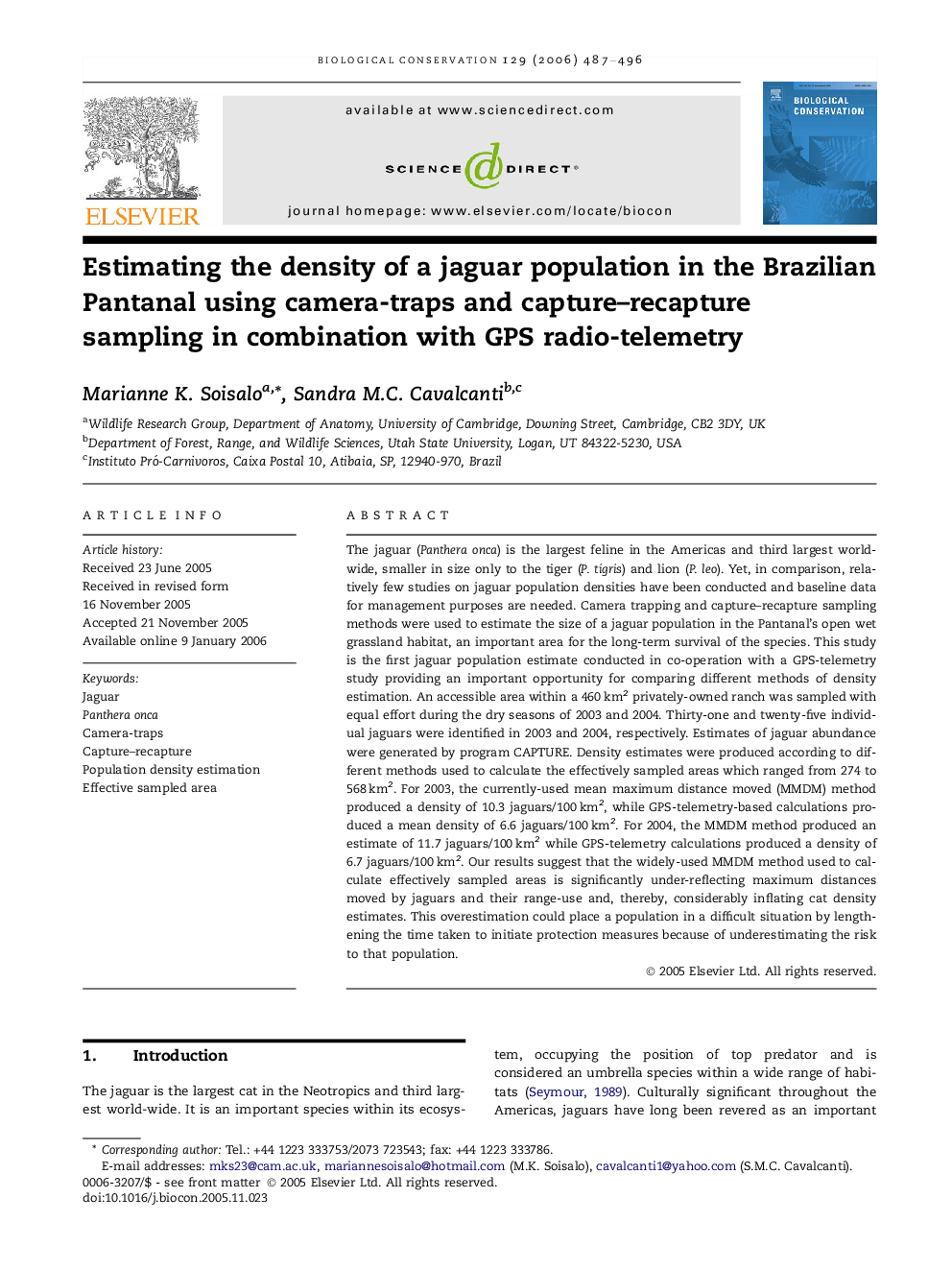| کد مقاله | کد نشریه | سال انتشار | مقاله انگلیسی | نسخه تمام متن |
|---|---|---|---|---|
| 4387703 | 1304621 | 2006 | 10 صفحه PDF | دانلود رایگان |

The jaguar (Panthera onca) is the largest feline in the Americas and third largest world-wide, smaller in size only to the tiger (P. tigris) and lion (P. leo). Yet, in comparison, relatively few studies on jaguar population densities have been conducted and baseline data for management purposes are needed. Camera trapping and capture–recapture sampling methods were used to estimate the size of a jaguar population in the Pantanal’s open wet grassland habitat, an important area for the long-term survival of the species. This study is the first jaguar population estimate conducted in co-operation with a GPS-telemetry study providing an important opportunity for comparing different methods of density estimation. An accessible area within a 460 km2 privately-owned ranch was sampled with equal effort during the dry seasons of 2003 and 2004. Thirty-one and twenty-five individual jaguars were identified in 2003 and 2004, respectively. Estimates of jaguar abundance were generated by program CAPTURE. Density estimates were produced according to different methods used to calculate the effectively sampled areas which ranged from 274 to 568 km2. For 2003, the currently-used mean maximum distance moved (MMDM) method produced a density of 10.3 jaguars/100 km2, while GPS-telemetry-based calculations produced a mean density of 6.6 jaguars/100 km2. For 2004, the MMDM method produced an estimate of 11.7 jaguars/100 km2 while GPS-telemetry calculations produced a density of 6.7 jaguars/100 km2. Our results suggest that the widely-used MMDM method used to calculate effectively sampled areas is significantly under-reflecting maximum distances moved by jaguars and their range-use and, thereby, considerably inflating cat density estimates. This overestimation could place a population in a difficult situation by lengthening the time taken to initiate protection measures because of underestimating the risk to that population.
Journal: Biological Conservation - Volume 129, Issue 4, May 2006, Pages 487–496